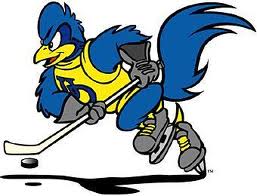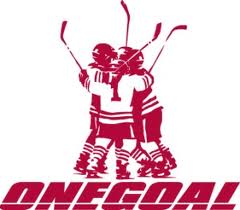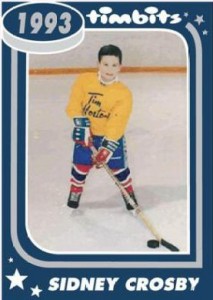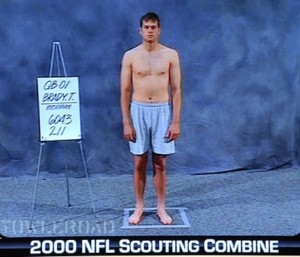Before I jump into today’s post, I have a couple announcements:
- You can now download my hockey speed training manual “Breakaway Hockey Speed” for free if you sign up for my newsletter (look left).
- I removed the membership requirement for checking out the videos at Ice Hockey Training so you can now watch them all for free. I did this because I’m not happy with how long it takes the videos to load on each page and I’ll probably be deleting those pages altogether in the next few weeks as we continue to build our video library over at Hockey Strength and Conditioning
- Lastly, I have an exciting announcement coming early next week. If you’re a player (or parent) and really want to take your off-season training up a notch, you won’t want to miss it.
On to the good stuff…
It’s been a busy couple weeks at Hockey Strength and Conditioning
To start, congratulations to my friend Jeff Cubos who was recently added to a very prestigious “expert panel” at our site (one that I managed to sneak onto!). I’ve learned a lot from him over the last year and look forward to more great stuff from him in the future.
Sean Skahan, Mike Potenza, and Darryl Nelson have all added really great articles and programs. I especially like Potenza’s contribution to our new “Youth Off-Ice Training Program” section, which caters directly to coaches and parents that are running off-ice training for their kids with little-to-no equipment. You can check them all out at the links below:
Improving Shoulder Mobility from Sean Skahan (Article)
Teaching Circuit Phase 1 from Mike Potenza (Youth Off-Ice Training Program)
Training Around an Injured Arm from Mike Potenza (Training Program for Injured Player)
Beginner Off-Season Strength Training from Darryl Nelson (Training Program)
The reason I’m keeping the article descriptions so short today is because I want to highlight a recent forum “conversation” on off-season conditioning for hockey players. You hear me boast about how good forum conversations can be, but if you never see it for yourself, you may be skeptical. Due to length restrictions, I’ve included the posts from only one member. Fortunately, that member is Jim Reeves, who has an OUTSTANDING reputation for training and developing elite level players.
Jim drops some wisdom on us…
Round 1
I’m not sure I agree with the recommendations given. I look at physical principles as unique qualities to develop in specific ways. Strength coaches are mistaken if they feel they can blend one exercise into the goals of another. Power development is a unique quality, move body weight or weighted implements for speed in finite quantities. Conditioning is workload tolerance. Move your body weight in specific movements within time specific or performance specific guidelines.
The error occurs when your begin to blend power exercises into a conditioning routine. A recipe for disaster. Power is power, conditioning is conditioning. Don’t blend the two, you will get sub-par results in both aspects.
My suggestions would be two fold. On the one hand, you have three weeks to begin a more aggressive off-ice workout workload, but choose basic exercise planes and do not introduce lifts you would not do in-season. ie RFE Split Squats would be out, hip flexors too sensitive to loading in-season. Sounds boring, but it works and no-one gets injured/irritated.
Conditioning is the other element. Target two high intensity sessions per week off-ice in addition to the on-ice sessions they get in the next three weeks. If ice-time is limited, then their on-ice sessions are critical, something you may not have any control over. Bikes are probably best, slide board good in the first two weeks but may not be the best choice in the week before on-ice competition.
JR
Round 2
I always throw up a red flag when someone suggests an Olympic lift as a means of conditioning. The tendency for it to go wrong is too easy and happens too fast to closely monitor as a coach in most situations. These lifts are not meant for conditioning purposes, save them for training an athletes power. Square peg, round hole analogy applies here.
To add to my thoughts, I think that introducing treadmill sprints and hang cleans after a player has just finished their season may be too aggressive for this time of the year.
First, running I find is not very well received in the first couple of weeks of an off-season program, never mind with players who just stepped of the ice the day before. If they were on the ice 6-7 times per week as indicated, then I doubt they have had much in-season running work performed up till this point. Last thing you want to do is run the risk of irritating the hip flexors with only three weeks before the next major on-ice event.
Second, the one area of the body which is almost across the board restricted at the end of a season is a players wrist extension. To catch a clean repetition at high speeds with moderate loads will push this area of their body beyond what it will comfortably be able to handle, again introducing risk where it is not necessary.
Also, if I put a stop watch to any of my athlete’s clean reps, I doubt they will get more than two reps in the interval times suggested. I can think of many other safer “power” exercises which would allow for more repetitions in the given interval time, thus increasing the metabolic demand on the body, which is the intended goal of the session. Or, the athlete will load heavy in order to get some level of fatigue with so few repetitions. Again, introducing risk if they have not been performing hang cleans throughout the season right up till the beginning of this short time off the ice.
I would move toward conditioning modes which achieve the goals of the metabolic and energy demands you are looking for but in safer exercises for this time of the year. In late July after 8 to 10 weeks of an off-season program, substitute weighted jump squats or squat jumps into the suggested protocol and the players will find it is a good conditioning session. 10/10 on the treadmill may be a little slow for only 10 second intervals, maybe closer to 11.5-12mph for most 16+ athletes.
JR
Round 3
As I said above, I would stay away from running right now. Bike or condition on the ice. If twice a week is off-ice for you right now, then add one or two on-ice sessions as well. If you are looking to keep their strength, then strength train. TB Deadlift, Front squat, single leg squats all good options, add in 2-3 hip isolation ex’s and upper body lifts and you have a pretty good day right there. Add power exercises before strength work as you see fit, 2-3 per workout, basic movements like hurdle jumps, Single leg box hops, Med ball rotation and chop throws.
In all honesty I would look hard at mobility and flexibility issues at this point over focusing on power development. You will get more bang for the buck and players will perform better during this short term focus.
JR
Round 4
No, primarily the wrist. Maybe a little bit of pronation/supination loss observed but not much of anything lost at the elbow in my experience. Any loss of elbow range is in guys who focus on the “hunting workout”; all guns and traps!! (editors note: this is hilarious) We don’t get many of those around here.
As for running, I implement a progressive increase in the distances and the length of the shuttles as the initial weeks of our off-season program begins. More stops and starts initially to work on deceleration skills, but I think more importantly the short distances limit the ability to get into a full running stride. The length of the stride increases as the shuttle length increases. We bike a little at the beginning, then progress off the bike and into the slideboard and short shuttles, then lengthen out the shuttles before beginning any acceleration work.
Sled drags are started as a walking/marching speed for the first 8 to 10 weeks, and we do a lot of unloaded acceleration work after the 6th week of the program before looking at implementing resisted sprint work with any resistance.
JR
Round 5
No direct acceleration work for the first six weeks of the off-season. Deceleration is the focus. The distances are increased for both conditioning in the early part of the off-season and for when acceleration work is introduced after the 6 week mark.
JR
Round 6
Yes, we get some players starting at the end of March, I stretch that period out to 8 weeks, versus 6 weeks if they start mid-May. If they start with us at the beginning of July and haven’t been on the ice for quite some time, then they get a fast forward version of 2-3 weeks of deceleration then we start the acceleration work.
But there are always exceptions, for example last year I had one player still playing in the Stanley cup finals, so by the first week of July he was still only three weeks removed from being on the ice. The most important aspect I am trying to respect here is the inability of a player to perform high speed hip extension through a full ROM. I feel the need to eliminate muscular guarding, specific tissue restrictions and re-educate/re-train the muscular recruitment patterns around the hip joint. Shorter shuttles and reduced acceleration work accomplish that goal for me and give the athlete’s body the opportunity to adapt to the workouts before we ask them to move in that manner.
JR
I still strongly belief that the best way to become better at anything is to have good mentors. With this in mind, I look at a Hockey Strength and Conditioning membership (which is only $1!) as an investment in a mentorship with multiple coaches that work with and develop NHL players more so than a traditional “information site.” This situation would not have been possible 10 years ago, and it’s an incredible opportunity for people that train hockey players at any level to learn form the guys that have been doing it the longest, and the best.
Click Here for the best in Hockey Strength and Conditioning
To your continued success,
Kevin Neeld
P.S. Try HockeyStrengthandConditioning.com for 7 days for only $1! It’ll be the best dollar you’ve ever spent.
Please enter your first name and email below to sign up for my FREE Athletic Development and Hockey Training Newsletter!
















